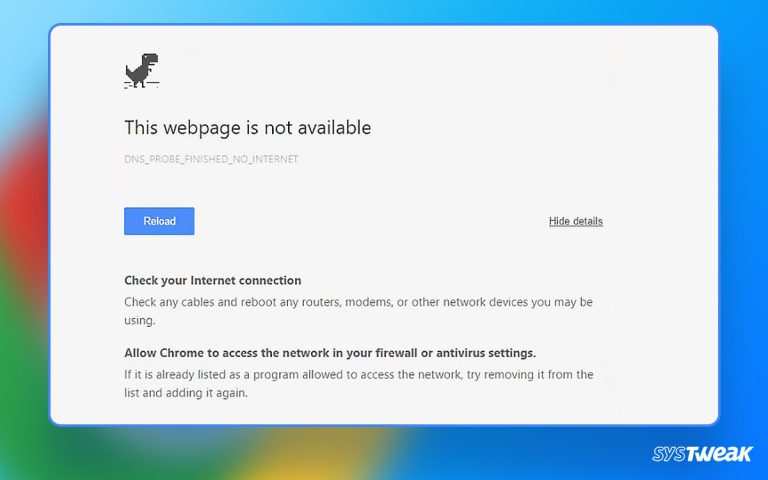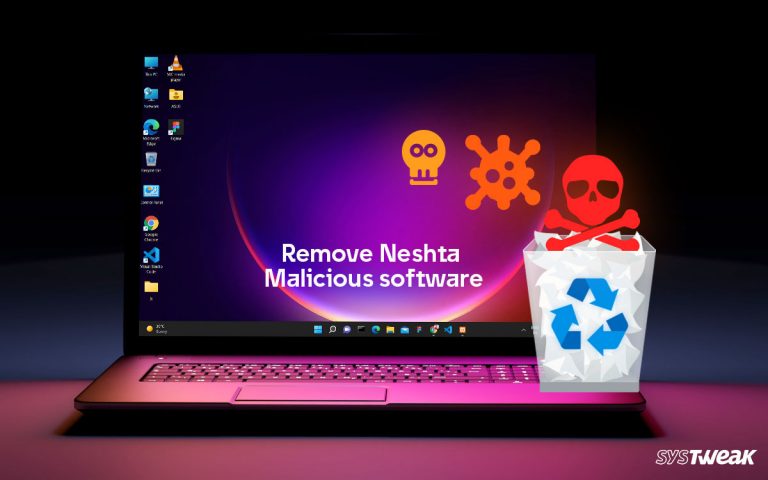ven when your internet connection is good, are you facing the Windows Defender won’t update issue? Fortunately, there are different ways to fix this problem and get Windows Defender working. However, if you have a better solution like Systweak Antivirus installed and running, you can forget about this issue and keep your Windows secure using this best security application for Windows.
50% OFF

BLACK FRIDAY OFFERS
Unlock Black Friday Mega Savings — Systweak Tools FLAT 50% OFF!
How to fix Windows Defender is unable to update?
1. Basic fixes
Before getting into more technicalities, try these basic steps to fix the Windows Defender update issue.
- If you have an additional security application running, check Windows Defender to ensure it has not disabled the updates. If it interferes with a pre-installed security application, uninstall the third-party antivirus solution.
- Manually check for Windows Defender Update; try downloading and installing available Windows Update. If the update fails, from the notification area, click the shield icon > select Virus & threat protection > Check for updates.
- Install all updates and reboot the system. After that, try updating Windows Defender and enable Windows Defender to update it automatically.
- Run the Windows Update troubleshooter.
Also Read- Do You Need Antivirus for Windows 11, 10
If the preliminary fixes do not help, try the other fixes explained below.
2. Try an alternative antivirus solution
When Windows Defender fails to function as it is supposed to, consider using an alternative like Systweak Antivirus. To use this best security tool and forget about all update errors, follow these steps:
1. Download and install Systweak Antivirus.
2. Run the best antivirus for Windows

3. For better security, the tool offers different scanning modes. Select one from the given choices –

Quick Scan – check the recent and default folders for threats.
Deep Scan – performs an in-depth scan of folders, subfolders, files, hidden files, and every other data saved on the PC.
Custom Scan – allows users to specify the drive to scan for malware, ransomware, trojan, adware, and other nasty threats.
4. Click Start Scan Now to scan the system and locate hidden malware threats.
5. To clean detected malware, virus, and other devious threats click Protect Now.
6. Restart your computer to apply changes.
This professional security tool performs its job in the background. Moreover, it comes with real-time protection, malware protection, scans startup items for infection, thereby keeping you safe from ransomware, spyware, malware, adware, identity theft, and other viruses. It is easy to install and straightforward to use.
Must Read- How Can An Antivirus Speed Up Your PC
3. Manually install update definitions
1. Visit Windows security portal
2. Follow on-screen instructions to download and install definition updates
3. If you are unable to manually get the updates
4. Set Windows Defender service to automatic
1. Press Windows + R and open the Run window.
2. Type services.msc > Enter
3. Right-click Windows Defender Antivirus Service > Properties
4. Make sure the Service Status is running.

5. Ensure Startup type is Automatic (if not select Automatic from drop-down menu > hit Start.

6. To save changes click Apple > Ok.
5. Verify your system has all Windows Update Files
If you don’t have all the required Windows update files chances of facing Windows Defender won’t update. Therefore, you need to verify that you have all Windows Update files.
To do so, follow these steps:
1. Visit Windows Update Website.
2. Next, install recommended updates into your system.
3. Review the Windowsupdate.log file for error messages. To do so, click on Start and type %windir%windowsupdate.login into the search box. You will now get keywords explaining the issue.
4. Now visit Windows Help and How-to page and type the keywords (explaining the issue) you got from the log file.
6. Run an SFC Scan
1. Run elevated Command Prompt
2. Type sfc /scannow > Enter.
Remember there is a space between sfc and /

3. This command will check Windows for corrupt system files and will fix them.
7. Update Windows Defender via Command Prompt
When Windows Defender fails to update on its own, consider using Command Prompt. To do so, follow the steps below:
1. Open elevated Command Prompt.
2. In the Command Prompt administrator windows, type cd /d “\Program Files\Windows Defender” > Enter.
3. Next, type mpcmdrun.exe -signatureupdate > Enter.
4. The above commands will start Windows Update.
8. Run Windows Update Troubleshooter
1. Press Windows + I > Update & Security.
2. Click Troubleshoot from the left pane > Additional troubleshooters.

3. Select Windows Update > Run the troubleshooter.

4. Follow on-screen instructions.
5. When done, click Close the troubleshooter.
6. Restart the system.
This should fix the issue
Must Read- How Often Should You Update Your Antivirus Software?
Wrap Up
The above steps will certainly help fix Windows Update Error on Windows. However, if you don’t like using Windows Defender because of the way it behaves give Systweak Antivirus a try. This excellent and powerful antivirus tool will help identify and clean malware, spyware, adware, ransomware, trojan, and other threats.
Let us know how you find the post. Also, if you have any solution do share the same with us in the comments section below.





